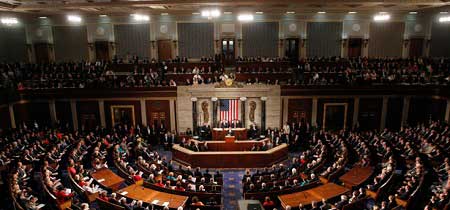The American Energy Innovation Act would extend the critical solar investment tax credit (ITC), but also give the option for facilities to choose between the ITC and a Production Tax Credit (PTC).
If you’re wondering what might happen to America’s solar industry if the solar Investment Tax Credit (ITC) is allowed to expire at the end of next year, you’re not alone. With pressure coming from an industry of 174,000 (more than Facebook, Apple, and Google combined) and both ends of the political spectrum, Congress should be paying attention too.
Last month, a group of prominent Democrats in the U.S. Senate released a draft version of what they are calling the American Energy Innovation Act.
The draft legislation, which faces long odds in a Congress whose majority refuses to accept the economic benefits of clean energy, provides a framework for developing a clean energy economy and achieving significant reductions in carbon emissions. In the bill, the Senators outline a proactive and diverse approach to investment, research, and development, signaling the common-sense policies a clean energy-friendly Congress would take to secure a sustainable energy future.
Solar in the Spotlight
Solar gets a huge shout-out in the American Energy Innovation Act. First and foremost, the bill would extend the critical solar investment tax credit (ITC), but also give the option for facilities to choose between the ITC and a Production Tax Credit (PTC).
This bill represents some of several ongoing legislative efforts to extend the ITC, but many have said that this particular bill is more of a public display of support for smart clean energy policies.
Looking further down the road though, the American Energy Innovation Act offers consumers, workers, and companies in the U.S. a tremendous array (pun intended) of opportunities to boost solar energy development. From expanding access to community solar to funding job training programs, the bill would fundamentally change solar energy production and distribution in America. Take a look at some of the specifics:
– Each year for the next 15 years, $200 million would be invested in solar installation job training programs.
– The Federal Trade Commission would be required to seek out and end interconnection practices that impede distributed generation.
– Through amendments to PURPA, community solar plants up to 2MW in size would become legal nationwide.
These initiatives would help provide the solar industry with the market stability it craves while also comprehensively addressing the needs of a quickly evolving energy industry that faces tough environmental challenges. And though the draft American Energy Innovation Act is a promising glimpse into potential U.S. energy policy, unfortunately for the clean energy industry, it’s still just a bill.
This article has been published here by the PVBUZZ team from the original article written by Jeffrey Popkin for publication on SolSystems.
Sol Systems is a solar energy finance and investment firm. The company has facilitated financing for 333MW of solar projects on behalf of Fortune 100 corporations, insurance companies, utilities, banks, family offices, and individuals. Sol Systems provides secure, sustainable investment opportunities to investor clients, and sophisticated project financing solutions to developers. The company’s tailored financial services range from tax structured investments and project acquisition, to debt financing and SREC portfolio management. Inc. Magazine named Sol Systems on its annual Inc. 500 list of the nation’s fastest-growing private companies for a second consecutive year, ranking it No. 6 in the nation’s top solar companies in 2014.













Comments